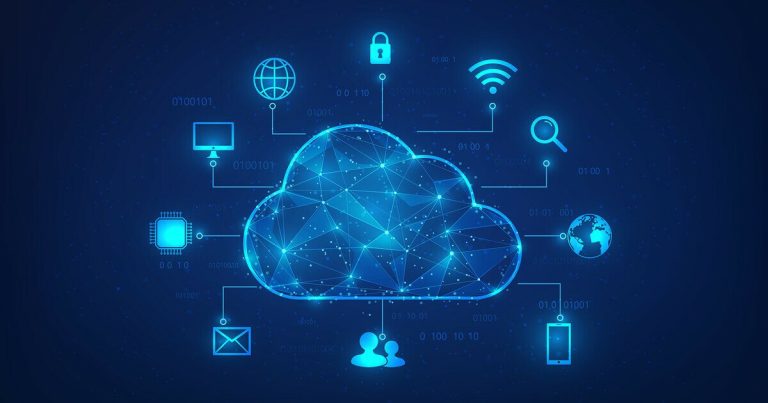In today’s digital age, security concerns are paramount. With increasing cyber threats and data breaches, the need for more robust and foolproof security measures has never been greater. Enter biometric security—a technology that leverages unique biological traits to authenticate and grant access to Cloud storage systems and data. As we continue to embrace digital transformation, biometric security is emerging as a cornerstone of modern cybersecurity.
What is Biometric Security?
Biometric security refers to the use of an individual’s physical or behavioral characteristics to verify their identity. Unlike traditional methods such as passwords or PINs, which can be forgotten, stolen, or hacked, biometric traits are inherently linked to the individual, making them much harder to replicate or steal.
The most common biometric identifiers include:
- Fingerprint Recognition: One of the earliest and most widespread forms of biometric security, fingerprint recognition uses the unique patterns of ridges and valleys on a person’s finger to authenticate identity.
- Facial Recognition: This technology analyzes facial features such as the distance between the eyes, nose shape, and jawline to verify identity. It has become increasingly popular in smartphones and security systems.
- Iris Recognition: Iris recognition scans the unique patterns in the colored part of the eye. It’s considered one of the most accurate forms of biometric security.
- Voice Recognition: This technology identifies individuals based on their unique vocal characteristics, such as pitch, tone, and rhythm.
- Behavioral Biometrics: Behavioral biometrics analyze patterns in the way individuals interact with devices, such as typing speed, mouse movement, or even how they walk.
The Advantages of Biometric Security
- Enhanced Security: Since biometric traits are unique to each individual, they offer a higher level of security compared to traditional methods. Biometric data is incredibly difficult to duplicate or forge.
- Convenience: Biometric systems eliminate the need for users to remember passwords or carry physical tokens. Authentication can be done quickly and effortlessly, often with just a touch or a glance.
- Non-transferable: Unlike passwords or keys, biometric data cannot be easily shared or transferred, reducing the risk of unauthorized access.
- Fraud Prevention: In financial services, for example, biometric authentication can significantly reduce instances of fraud by ensuring that the person initiating a transaction is indeed who they claim to be.
- User Experience: With the rise of facial recognition in smartphones and smart devices, users have come to expect seamless and instantaneous access to their technology, enhancing the overall user experience.
Challenges and Concerns
Despite its many advantages, biometric security is not without its challenges:
- Privacy Issues: The collection and storage of biometric data raise significant privacy concerns. Biometric data, if compromised, cannot be easily changed like a password. Protecting this data from breaches is crucial.
- False Positives/Negatives: No system is perfect. Biometric systems can sometimes misidentify individuals, leading to false positives (incorrectly granting access) or false negatives (denying access to the rightful user).
- High Costs: Implementing biometric systems can be expensive, especially for small businesses. The cost of hardware, software, and maintenance can be prohibitive.
- Data Storage and Security: Storing biometric data securely is a challenge. If biometric data is stored locally, it is susceptible to device theft. If stored in the cloud, it must be protected from cyber-attacks.
- Ethical Concerns: The use of biometric data for surveillance or tracking raises ethical questions about individual rights and freedoms.
The Future of Biometric Security
The future of biometric security is promising. As technology continues to advance, we can expect to see more sophisticated and accurate biometric systems. Multimodal biometric systems, which combine two or more biometric traits (e.g., fingerprint and facial recognition), are likely to become more common, offering even greater security.
Moreover, the integration of biometric security with artificial intelligence (AI) and machine learning will enable more adaptive and context-aware security solutions. These systems will be able to learn and evolve, providing real-time protection against emerging threats.
As biometric security becomes more mainstream, industries such as finance, healthcare, and government are likely to be at the forefront of adoption. However, it’s essential that the deployment of these technologies is done with careful consideration of privacy and ethical implications.
Conclusion
Biometric security represents a significant leap forward in the quest for secure and user-friendly authentication methods. Its ability to provide a higher level of protection while offering convenience makes it an attractive option for both individuals and organizations. However, as with any technology, it is vital to address the challenges and concerns associated with its use to ensure that it serves as a force for good in the digital world.
As we move into a future where digital interactions are increasingly prevalent, biometric security will play a crucial role in safeguarding our identities, data, and lives. The key will be balancing innovation with responsibility to create a secure and privacy-respecting digital environment.
